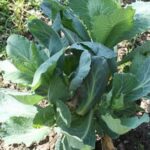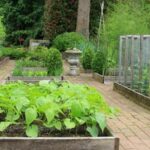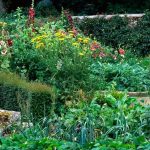Are you interested in growing your own vegetables but don’t have a backyard or outdoor space? Indoor gardening kits for vegetables may be the perfect solution for you. These kits provide everything you need to start growing your favorite veggies right in the comfort of your own home.
Indoor gardening has become increasingly popular, and for good reason. Not only does it allow you to have fresh, organic produce at your fingertips, but it also brings the joy of gardening into any living space. In this article, we will explore the world of indoor gardening kits for vegetables, from choosing the right kit to maintenance and troubleshooting common issues.
Whether you’re a seasoned gardener or a beginner with a green thumb, indoor gardening kits offer a convenient and enjoyable way to grow your own food. So let’s dive into the benefits of indoor gardening and how to get started with the right kit for your vegetable garden.
Benefits of Indoor Gardening
Indoor gardening has gained increasing popularity in recent years, and for good reason. There are numerous benefits to cultivating a garden indoors, using specially designed indoor gardening kits for vegetables. Whether you have limited outdoor space, live in a climate with harsh weather conditions, or simply want the convenience of having fresh produce at your fingertips, indoor gardening offers a plethora of advantages.
The benefits of indoor gardening include:
- Year-Round Growing: With indoor gardening kits for vegetables, you can enjoy growing your favorite produce regardless of the season. This means no more waiting for the right time to plant or harvest; you can have fresh vegetables all year long.
- Space-Saving Solution: Indoor gardens are ideal for those who have limited outdoor space or live in apartments and condominiums. By utilizing vertical gardening techniques and compact indoor gardening kits, you can maximize your space and still enjoy a bountiful harvest.
- Control Over Growing Conditions: When you garden indoors, you have complete control over the growing environment. You can adjust lighting, temperature, humidity, and soil quality to create the perfect conditions for your plants to thrive.
Furthermore, indoor vegetable gardens offer the added benefit of being able to monitor and manage pests more effectively compared to traditional outdoor gardens. This is especially important for those who want to grow organically without the use of chemical pesticides.
In addition to these practical benefits, many people find that tending to an indoor garden provides therapeutic effects. The act of nurturing plants and watching them grow can be incredibly rewarding and relaxing, making indoor gardening a great hobby for reducing stress and promoting overall well-being. With so many advantages to reap from indoor gardening kits for vegetables, it’s no wonder that this trend continues to gather momentum among home gardeners.
Choosing the Right Indoor Gardening Kit for Vegetables
When it comes to choosing the right indoor gardening kit for vegetables, there are a few key factors to consider. From the size of your space to your level of expertise in gardening, selecting the perfect kit can make all the difference in the success of your indoor vegetable garden.
Consider Your Space and Lighting
Before purchasing an indoor gardening kit for vegetables, take some time to assess the space where you plan to set up your garden. Consider how much available space you have, as well as the amount of natural light that reaches that area. Some kits may be better suited for smaller spaces with limited light, while others may require more room and direct sunlight.
Research Different Kit Options
There are several types of indoor gardening kits available for growing vegetables, ranging from simple hydroponic setups to complete LED grow systems. Take some time to research the different options available and consider what will work best for your specific needs. Some kits come with everything you need included, while others may require additional purchases such as grow lights or nutrient solutions.
Consider Your Level of Experience
When choosing an indoor gardening kit for vegetables, it’s important to consider your level of experience with gardening. If you’re a beginner, look for a kit that is user-friendly and requires minimal maintenance. More experienced gardeners may be interested in more advanced hydroponic or aquaponic systems. Be sure to read reviews and product descriptions carefully to ensure that you select a kit that aligns with your skill level and gardening goals.
By carefully considering factors such as space, lighting, research on different options, and your level of experience when choosing an indoor gardening kit for vegetables, you can set yourself up for success in cultivating a thriving indoor vegetable garden.
Best Vegetables for Indoor Gardening
When it comes to starting your indoor vegetable garden, choosing the right vegetables to grow is crucial. Not all vegetables thrive in indoor environments, so it’s important to select those that are well-suited for limited space and controlled conditions. Some of the best vegetables for indoor gardening include tomatoes, lettuce, peppers, carrots, and herbs like basil and cilantro.
Tomatoes are a popular choice for indoor gardens because they can be grown in containers and don’t require a lot of space. They also produce a bountiful harvest when properly cared for. Lettuce is another excellent option as it grows quickly and can be harvested multiple times.
Peppers are relatively low-maintenance and can add a pop of color to your indoor garden. Carrots may require deeper pots due to their root system, but they can still be successfully grown indoors.
Herbs like basil and cilantro are perfect for indoor gardening kits as they don’t take up much space and can be easily incorporated into various recipes. These herbs also provide a fresh burst of flavor that you wouldn’t get from store-bought versions. Ultimately, the best vegetables for indoor gardening are those that fit your personal preferences and grow well in the specific conditions of your home.
| Vegetable | Best Conditions |
|---|---|
| Tomatoes | Containers with plenty of sunlight |
| Lettuce | Quick-growing with minimal light requirements |
| Peppers | Low-maintenance with vibrant colors |
| Carrots | Pots with deeper soil depth |
Setting Up Your Indoor Garden
When setting up your indoor vegetable garden, there are a few important tips and tricks to keep in mind to ensure the success of your plants. Firstly, it’s crucial to choose the right location for your garden.
Most vegetables require at least 6-8 hours of sunlight, so selecting a spot near a window or where they can receive adequate natural light is essential. If natural light is limited in your space, consider using artificial grow lights to supplement the light needs of your plants.
Another important factor when setting up your indoor garden is choosing the right containers for your vegetables. It’s important to select pots that have good drainage to prevent waterlogging, which can lead to root rot. Additionally, make sure the containers are large enough to accommodate the mature size of the vegetables you plan to grow. This will allow for proper root development and optimal growth.
In addition to proper lighting and containers, the type of soil you use is also critical for indoor vegetable gardening. Opt for high-quality potting mix that is well-draining and nutrient-rich. Avoid using regular garden soil, as it may compact in containers and hinder root growth. When starting seeds or transplanting seedlings into your indoor garden, be sure to use a soilless seed-starting mix specifically designed for young plants.
| Indoor Gardening Tips | Description |
|---|---|
| Lighting | Choose a location with adequate natural light or use grow lights for supplementation. |
| Containers | Select pots with good drainage and ample space for root development. |
| Soil | Use high-quality potting mix that is well-draining and nutrient-rich. |
Maintenance and Care for Indoor Vegetable Gardens
Maintaining and caring for your indoor vegetable garden is essential to ensure that your plants thrive and produce an abundant harvest. Whether you are a seasoned gardener or just starting with indoor gardening kits for vegetables, proper care and maintenance are crucial. Here are some tips and tricks to help you keep your indoor vegetable garden healthy:
- Watering: One of the most important aspects of maintaining an indoor vegetable garden is ensuring that your plants receive the right amount of water. It’s essential to avoid overwatering or underwatering, as both can lead to plant stress and poor growth. Be sure to check the moisture levels in the soil regularly and adjust your watering schedule accordingly.
- Lighting: Most vegetables require at least 6-8 hours of direct sunlight each day to thrive. If natural light is limited in your home, consider supplementing with grow lights to provide the necessary light for optimal plant growth. Position your indoor garden near a window or under grow lights to ensure that your vegetables receive adequate light.
- Fertilizing: Indoor plants rely on you to provide them with essential nutrients since they cannot access them naturally from the soil. Choose a balanced fertilizer specifically formulated for vegetables and follow the instructions for application. Over-fertilizing can be harmful, so it’s important not to exceed the recommended dosage.
In addition to these general care tips, it’s important to monitor your plants regularly for any signs of pests or diseases. Inspect the leaves, stems, and soil for any unusual markings, discoloration, or pests such as aphids or spider mites. If you notice any issues, take prompt action to address them before they escalate and negatively impact your indoor vegetable garden.
Overall, by providing consistent care through proper watering, adequate lighting, fertilization, and vigilant monitoring for pests and diseases, you can ensure that your indoor vegetable garden thrives and produces a bountiful harvest. With dedication and attention to detail, you can enjoy the satisfaction of growing fresh and nutritious vegetables right in your own home using indoor gardening kits for vegetables.
Troubleshooting Common Issues in Indoor Gardening
Indoor gardening can be a rewarding and enjoyable hobby, but it’s not without its challenges. Even with the best indoor gardening kits for vegetables, you may encounter some common issues along the way. Here are some troubleshooting tips to help you address and prevent problems in your indoor vegetable garden.
One common issue in indoor gardening is inadequate lighting. Insufficient light can lead to stunted growth and poor harvests. To address this problem, consider investing in full-spectrum grow lights or placing your indoor garden near a sunny window. You can also rotate your plants regularly to ensure they receive uniform light exposure.
Another common issue is overwatering or underwatering your vegetables. Both of these can lead to root rot or wilting. To prevent overwatering, make sure your indoor gardening kit has proper drainage, and water your plants only when the top inch of soil feels dry to the touch. Underwatering can be addressed by setting up a regular watering schedule and making sure your plants receive adequate moisture.
Pests and diseases can also plague indoor vegetable gardens. Keep an eye out for signs of pests such as aphids or whiteflies, and take prompt action to remove them from your plants. To prevent diseases, maintain good air circulation around your plants and avoid overcrowding them in your indoor garden.
Using organic pesticides or insecticidal soaps can also help keep pests at bay in your indoor vegetable garden. With these troubleshooting tips, you can overcome common issues and enjoy a successful indoor garden with your vegetable kits indoors.
Harvesting and Enjoying the Fruits of Your Indoor Garden
Once your indoor vegetable garden has been carefully tended and nourished, it’s time to reap the rewards of your hard work. Harvesting and enjoying the fruits of your indoor garden can be a truly satisfying experience, allowing you to taste the freshness and flavor of home-grown produce.
Harvesting Your Vegetables
When it comes to harvesting your indoor vegetables, timing is key. Each type of vegetable will have its own optimal harvest time, so it’s important to do some research or read the instructions that come with your gardening kit. Generally, you’ll want to wait until the vegetables are fully mature, but not overly ripe.
Enjoying the Fruits of Your Labor
One of the best parts of harvesting your indoor garden is being able to enjoy the delicious and nutritious produce that you’ve grown yourself. Whether it’s adding fresh herbs to your meals, creating a salad with homegrown greens, or incorporating your vegetables into various dishes, there are countless ways to savor the flavors of your indoor garden.
Sharing Your Harvest
If you find that you have an abundance of fresh vegetables from your indoor garden, consider sharing them with friends, family, or neighbors. Not only will you spread joy with your homegrown produce, but it may also inspire others to try their hand at indoor gardening kits for vegetables themselves.
Conclusion
In conclusion, indoor gardening with vegetable kits offers a convenient and rewarding way to grow your own produce right in the comfort of your home. The benefits of indoor gardening are numerous, from having access to fresh and nutritious vegetables all year round to the therapeutic effects of tending to plants. By choosing the right indoor gardening kit for vegetables and selecting the best vegetables for indoor gardening, you can set yourself up for a successful and enjoyable gardening experience.
Setting up an indoor garden requires some careful planning and consideration, but with the right tips and tricks, it can be a relatively straightforward process. It’s important to maintain and care for your indoor vegetable garden properly in order to ensure healthy growth and abundant harvests. Understanding how to troubleshoot common issues that may arise in indoor gardening will also help you address any challenges that come your way.
Ultimately, harvesting and enjoying the fruits of your indoor garden is a truly satisfying experience. Whether you’re snipping fresh herbs for a meal or plucking ripe tomatoes from the vine, there’s nothing quite like savoring the literal fruits of your labor.
Embracing the joy of indoor gardening with vegetable kits opens up a world of possibilities for anyone interested in growing their own food at home. So why not give it a try and discover the gratification that comes with nurturing and harvesting your very own indoor vegetable garden?
Frequently Asked Questions
What Vegetables Are Good for an Indoor Garden?
When it comes to an indoor garden, some vegetables thrive better than others. Leafy greens like lettuce and spinach, herbs such as basil and parsley, and compact varieties of tomatoes and peppers are all great options for indoor gardening.
Is an Indoor Vegetable Garden Worth It?
An indoor vegetable garden can definitely be worth it for many people. It provides a convenient source of fresh produce, allows for year-round gardening regardless of the weather, and can be a soothing hobby. Plus, it’s a great way to add greenery to your home.
What Are the Best Vegetable Plants to Grow Indoors?
The best vegetable plants to grow indoors are those that don’t require a lot of space or direct sunlight. Consider growing vegetables like radishes, carrots, microgreens, and dwarf varieties of peas or beans. These plants are well-suited for indoor environments and can thrive in containers or small spaces.

If you’re looking to get into vegetable gardening, or are just looking for some tips on how to make your current garden better, then you’ve come to the right place! My name is Ethel and I have been gardening for years. In this blog, I’m going to share with you some of my best tips on how to create a successful vegetable garden.





